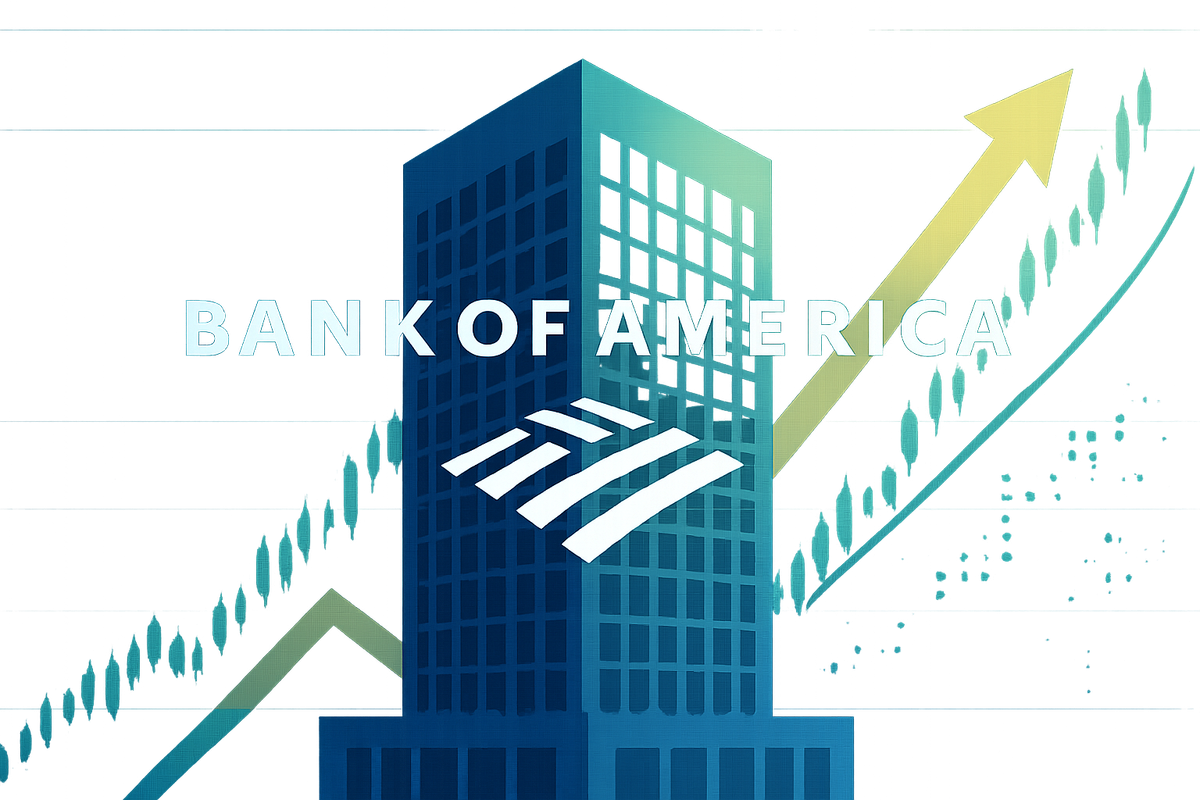This article first appeared on GuruFocus.
-
Earnings Per Share (EPS): $1.22, an increase of 18.4% year-over-year.
-
Net Revenue: $7.3 billion, a quarterly record.
-
Operating Leverage: 530 basis points of positive operating leverage.
-
Return on Average Assets (ROAA): 1.17%.
-
Net Interest Margin (NIM): 2.75%.
-
Fee Revenue Growth: 9.5% year-over-year.
-
Tangible Book Value Per Share: Increased 12.7% year-over-year.
-
Return on Tangible Common Equity (ROTCE): 18.6%.
-
Efficiency Ratio: Improved to 57.2%.
-
Total Average Deposits: Increased 1.8% linked quarter to $512 billion.
-
Average Loans: $379 billion, up 0.2% from the prior quarter.
-
Loan Yields: Increased to 5.97%, an 8-basis-point improvement linked quarter.
-
Net Interest Income: $4.25 billion, an increase of 4.2% on a linked-quarter basis.
-
Noninterest Income: Approximately $3.08 billion.
-
Noninterest Expense: Approximately $4.2 billion.
-
Nonperforming Assets Ratio: 0.43% at September 30.
-
Net Charge-Off Ratio: 0.56%, improved 3 basis points sequentially.
-
Common Equity Tier 1 (CET1) Capital Ratio: 10.9%.
Release Date: October 16, 2025
For the complete transcript of the earnings call, please refer to the full earnings call transcript.
-
U.S. Bancorp (NYSE:USB) reported a record net revenue of $7.3 billion for the third quarter, reflecting strong momentum across fee businesses and improved spread income.
-
Earnings per share increased by 18.4% year-over-year to $1.22, showcasing robust financial performance.
-
The company achieved a positive operating leverage of 530 basis points, indicating effective cost management and revenue growth.
-
Fee revenue grew by 9.5% year-over-year, driven by strength across Payments, Institutional, and Consumer businesses.
-
The Impact Finance business, bolstered by the Union Bank acquisition, has grown at a 17% CAGR from 2021 to 2024, contributing to fee income and providing a net tax benefit.
-
The net interest margin, although improved to 2.75%, still faces challenges from potential seasonal reversals in credit card favorability.
-
Noninterest expense totaled approximately $4.2 billion, indicating ongoing cost pressures despite efforts to manage expenses prudently.
-
The Corporate payment segment has seen negative year-over-year growth, particularly in government and corporate T&E spending.
-
There is uncertainty regarding the speed of achieving a 3% net interest margin by 2027, dependent on macroeconomic factors and deposit competition.
-
The company faces ongoing macroeconomic uncertainty, which could impact credit quality and financial performance.
Q: What are you seeing for net interest margin trend in the fourth quarter, and can you give us some puts and takes on your outlook for net interest income to be relatively flattish in the fourth quarter? A: John Stern, CFO, explained that the third quarter had favorable items that are sustainable, such as strong repricing success and favorable mix. Looking forward, while there are seasonal reversals expected in credit card favorability, the overall bias is towards the upside for both net interest income and net interest margin.
Q: What are some of the drivers you have for net interest margin expansion next year in the context of maybe a few rate cuts? A: John Stern, CFO, stated that they see a path to net interest margin expansion reaching 3% by 2027. Key drivers include fixed asset repricing, strategic mix adjustments towards card and commercial loans, and deposit mix and pricing. The speed of reaching 3% will depend on macroeconomic factors like the interest rate curve and deposit competition.
Q: Could you give us more color on the drivers of growth in the Payments space and your confidence in the mid-single-digit expectation? A: Gunjan Kedia, CEO, highlighted broad-based strength in fees, with a focus on creating interconnectivity between product sets. In Payments, new card acquisitions and strong pipelines in CPS and merchants are driving growth. The company is confident in achieving mid-single-digit fee growth across the portfolio, with potential upside over time.
Q: How are you getting out in front of stable coin activity in the Payments business? A: Gunjan Kedia, CEO, explained that they are working on stable coins in two areas: capital markets and investments, where they see a clear business model, and as a payment rail, where client demand is currently muted. They are preparing to provide stable coin services as a payment vehicle and expect to pilot some transactions this year.
Q: What is included in your other earning assets where the yield went up significantly linked quarter? A: John Stern, CFO, clarified that the increase is due to a gross-up of yield related to tri-party repo activities. The balance sheet reflects net balances, but the yield is shown gross, resulting in no meaningful change to net interest income or margin when considering both the asset and liability sides.
For the complete transcript of the earnings call, please refer to the full earnings call transcript.
Source: finance.yahoo.com






